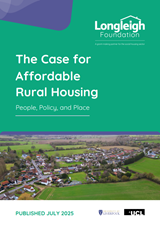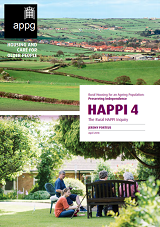Housing LIN celebrates Rural Housing Week 2025!

This week was the National Housing Federation's Rural Housing Week 2025, a celebration of the vital role that affordable housing plays in sustaining rural communities across England.
The week highlights the importance of delivering high-quality, affordable homes that help local people stay in the places they call home, support rural economies, and ensure thriving, inclusive villages and market towns.
Rural Housing Week aims to ensure that the specific housing needs of rural communities are not overlooked. It calls attention to the challenges these areas face, such as limited housing supply, high costs, and planning constraints, and showcases innovative solutions being delivered by housing associations, local authorities, and community-led initiatives.
At Housing LIN, we’re proud to support this important campaign and spotlight examples of good practice, partnership working, and community engagement that make a real difference in rural areas.
Highlights from Rural Housing Week 2025:
The case for Affordable Rural Housing: People, Policy, and Place
 Launched during Rural Housing Week 2025, this new Stonewater research report highlights England’s worsening rural housing crisis.
Launched during Rural Housing Week 2025, this new Stonewater research report highlights England’s worsening rural housing crisis.
Commissioned by Longleigh Foundation with partners including Fusion21 and the University of Liverpool, it identifies five key barriers (land, planning, funding, NHS strain, and community resistance).
Despite national housing targets, rural areas remain overlooked, fueling homelessness and economic decline. The report offers practical, expert-informed solutions to help secure affordable homes for rural communities.
Rural Housing for an Ageing Population: Preserving Independence (HAPPI 4)
 In April 2018, the All-Party Parliamentary Group on Housing and Care for Older People published its inquiry findings into rural housing.
In April 2018, the All-Party Parliamentary Group on Housing and Care for Older People published its inquiry findings into rural housing.
It warned that growing numbers of older people in rural areas will face a 'huge challenge to their independence and well-being' as their homes become unsuitable.
By 2039, nearly half of rural households will be aged over 65, while the gap between the average age in rural and urban areas continues to widen.
